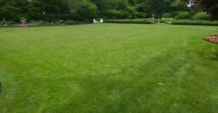If you moved sensitive plants indoors recently to save them from the sudden temperature drop you may be wondering, now what??? Hopefully you were able to transition your plants to the indoors, but if not, they may go through a period of shock. Symptoms may include:
yellowing leaves, dieback and wilt. Some plants won’t survive the shock if it is extreme. Others will recover over time and with proper care. It is expected that plants intended for a tropical location, or just a warmer USDA zone, will not perform their best indoors. Here are some tips for providing the best conditions possible to get them through the winter.
Water and Fertilizer
Whether indoors or out, the amount of light decreases into fall and winter resulting in
slower plant growth. This means the fertilizer and water needs will decrease. Only
provide water when the soil is dry about one-inch deep. Fertilizer can be applied at ¼
the recommended rate in November and again in February. Plants in smaller containers
often require water more frequently but less fertilizer because they have less soil. This
varies based on species so do your homework and research individual plant needs.
Temperature
Temperature is another important factor for growing plants indoors. If the temperature
drops below 50 degrees F, leaves of more sensitive plants may begin to yellow. Keep
this in mind if you adjust the thermostat during times when nobody is home such as
vacations.
Humidity
Relative humidity is the amount of moisture in the air. When the humidity is lower, plants
release more water from the leaves. Many common indoor plants prefer high relative
humidity. To increase the relative humidity, you can create a microclimate by grouping
plants closer together. Another option is to place a shallow container below each plant and fill it with water. Elevate the container by placing some gravel in the saucer so the
plant isn’t soaking directly in the water. Misting plant leaves is often recommended, but
is not a practical strategy to effectively increase humidity.
Light
Indoor plants should receive bright, indirect light either from a window or grow lights. Avoid placing plants too close to windows that are drafty or next to heat vents. Some indicators that your plants are not receiving enough light include:
• Elongated internodes (space between leaf/stem unions)
• Pale foliage color on new leaves
• Dieback of older leaves




